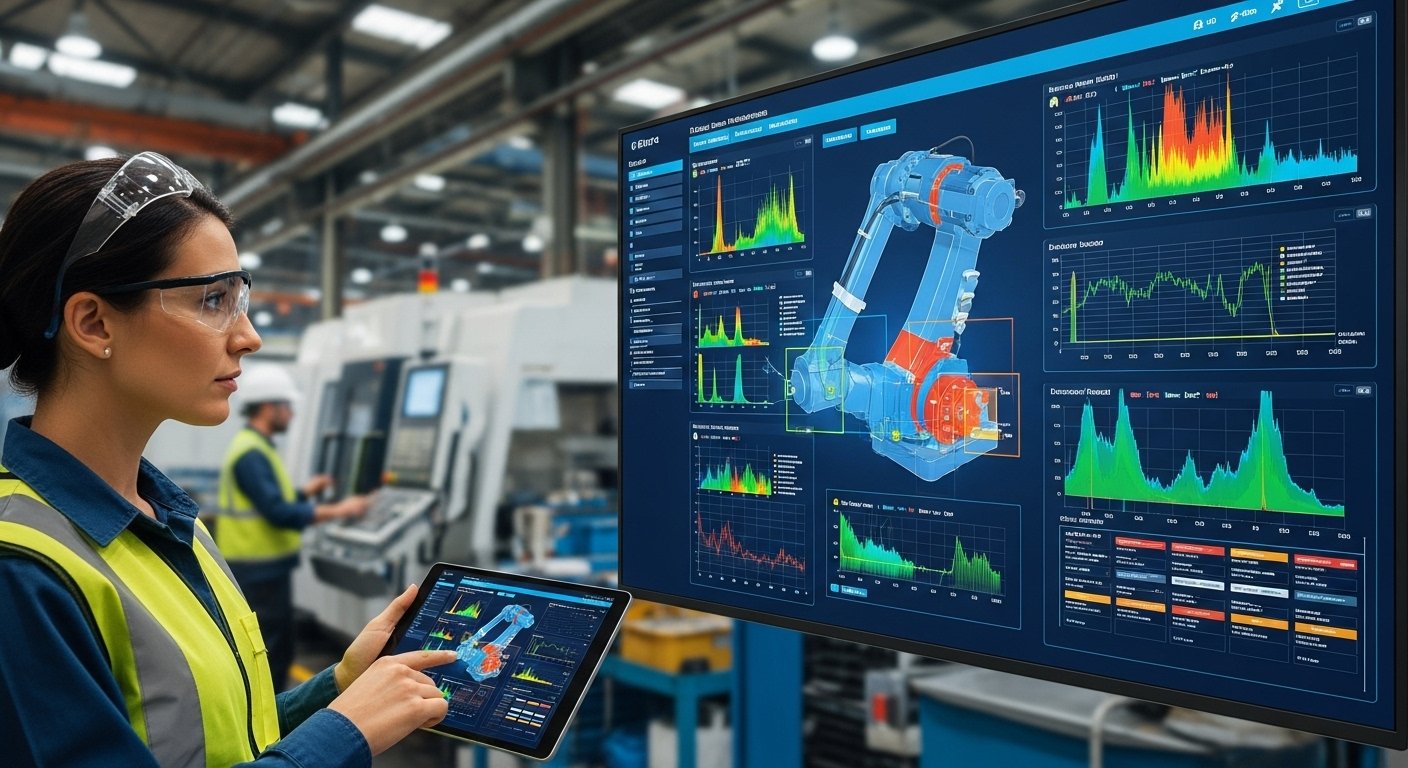Communication is the foundation of every successful enterprise. Yet, in large organizations, communication challenges pile up quickly—emails get buried, meetings drag on, and global teams struggle with language differences. Miscommunication can cost companies millions in lost productivity, errors, and missed opportunities.
This is where AI in enterprise communication steps in. By leveraging natural language processing (NLP), machine learning (ML), and generative AI, organizations can automate repetitive tasks, enhance collaboration, and gain deeper insights into communication patterns.
AI doesn’t just make communication faster—it makes it smarter. From AI-powered chatbots that answer employee questions instantly to intelligent meeting assistants that summarize discussions, enterprises now have the tools to streamline workflows, boost productivity, and foster better engagement across teams.
In this comprehensive guide, we’ll dive into how AI is reshaping enterprise communication, the tools leading this transformation, real-world case studies, and practical steps for implementation.
What is AI in Enterprise Communication?
At its core, AI in enterprise communication refers to the integration of artificial intelligence technologies—such as natural language processing, speech recognition, machine learning, and generative AI—into business communication channels.
These AI systems can:
-
Analyze large volumes of conversations
-
Understand intent and sentiment
-
Automate tasks like email sorting or meeting scheduling
-
Translate languages in real time
-
Provide intelligent recommendations for collaboration
In other words, AI acts as a communication enhancer, ensuring messages are clearer, faster, and more efficient across all levels of the organization.
How AI is Reshaping Enterprise Communication
1. Smarter Collaboration Platforms
Collaboration tools are no longer just digital chat rooms—they’re becoming intelligent assistants.
-
Slack AI can summarize lengthy threads, suggest relevant documents, and even detect action items.
-
Microsoft Teams Copilot integrates with Microsoft 365, allowing employees to pull key information from documents, emails, and meetings instantly.
These features save hours of manual effort while ensuring employees always have the right context.
2. Real-Time Transcription & Translation
Language and accessibility are major barriers in global organizations. AI-powered transcription and translation tools solve this challenge.
-
Otter.ai provides real-time meeting transcription, creating searchable notes that teams can reference later.
-
Google Meet and Zoom AI Companion offer live translation, making multilingual collaboration seamless.
For enterprises with distributed teams, this ensures no voice goes unheard and every participant can contribute equally.
3. Intelligent Email & Messaging Management
Emails remain the most widely used communication channel—but also one of the most overwhelming.
-
Superhuman uses AI to prioritize important messages, suggest replies, and highlight urgent tasks.
-
Gmail’s Smart Reply and Smart Compose features speed up communication with context-aware suggestions.
By reducing “email overload,” employees can focus on more strategic tasks.
4. Sentiment & Feedback Analysis
AI doesn’t just read messages—it understands their tone.
-
AI sentiment analysis tools scan customer emails, chat logs, or employee surveys to detect frustration, satisfaction, or disengagement.
-
HR teams can use these insights to identify early signs of burnout or dissatisfaction.
For example, a support center might prioritize negative-toned messages to ensure fast resolution and preserve customer loyalty.
5. AI-Powered Virtual Assistants
Virtual assistants are becoming the new workplace coordinators.
-
Zoom AI Companion and Google Duet AI can summarize meetings, suggest next steps, and schedule follow-ups automatically.
-
Internal HR bots can answer FAQs about benefits, vacation policies, or onboarding, freeing HR teams for more complex tasks.
This creates a more efficient communication flow across departments.
Benefits of AI in Enterprise Communication
Here’s a structured look at the key benefits enterprises gain from AI-driven communication systems:
| AI Feature | Benefit | Example Use Case |
|---|---|---|
| Chatbots & Virtual Agents | Faster, round-the-clock support | HR or IT support answering employee questions |
| Real-Time Transcription | Improved accessibility & searchable knowledge | Transcribing town hall meetings for later review |
| Email & Messaging Automation | Reduced overload, better prioritization | Sorting critical vs. non-critical emails |
| Sentiment Analysis | Early detection of issues, proactive action | Detecting unhappy customers before churn |
| Smart Collaboration Tools | Streamlined teamwork & decision-making | AI suggesting relevant docs during a project sprint |
| Translation & Localization | Breaking global communication barriers | Live translation in multinational team meetings |
Practical Tips for Implementing AI in Communication
-
Start with high-impact areas
Identify bottlenecks—like customer support wait times or excessive meeting notes—and deploy AI there first. -
Ensure compliance and privacy
Choose AI tools that adhere to GDPR, HIPAA, or SOC 2 standards to protect sensitive enterprise data. -
Train your teams
Employees should view AI as an enabler, not a replacement. Provide training on using AI assistants effectively. -
Measure and iterate
Track metrics like response time reduction, meeting efficiency, or customer satisfaction scores to evaluate ROI. -
Integrate with existing workflows
The best AI tools are those that plug into existing platforms—like Microsoft Teams, Slack, or Salesforce—without disrupting workflows.
Real-World Examples of AI in Enterprise Communication
-
RingCentral’s 2025 Trends Report revealed that 72% of enterprises already leverage AI in communication, especially for customer support chatbots and internal collaboration. (Read the report here)
-
IBM integrates AI across its internal systems, using chatbots to support employees with HR queries and AI analytics to optimize collaboration across global teams.
-
Supportbench, a customer support platform, uses AI to streamline knowledge sharing, ensuring employees can quickly find accurate answers—reducing ticket resolution times. [(Internal link suggestion: The Future of Business Communication Tools)]
The Challenges of AI in Enterprise Communication
While the benefits are clear, enterprises must also address certain challenges:
-
Data Privacy & Security: AI systems process vast amounts of communication data, raising concerns about breaches.
-
Integration Complexity: Legacy communication tools may not integrate seamlessly with AI platforms.
-
Bias in AI Models: If trained on flawed data, AI systems can misinterpret tone, intent, or cultural nuances.
-
Change Management: Employees may resist adopting AI if they fear job displacement.
Successful adoption requires not just technology investment, but also clear policies, ethical guidelines, and employee buy-in.
Future of AI in Enterprise Communication
Looking ahead, AI will evolve from being just a support tool to becoming a strategic communication partner. Emerging trends include:
-
Generative AI for Content Creation: Drafting reports, presentations, and training materials automatically.
-
AI Governance in Communication: Policies ensuring ethical and transparent use of AI in sensitive conversations.
-
Emotion-Aware AI: Tools capable of detecting deeper emotional cues in conversations.
-
Agentic AI Systems: Autonomous AI “agents” that handle multi-step communication workflows end-to-end.
The future is one where enterprise communication will not just be faster and smarter, but also more human-centered.
Conclusion: The Future Belongs to Smarter Communication
The rise of AI in enterprise communication is more than a technological trend—it’s a strategic shift in how businesses operate. From cutting through email clutter to making global teams feel closer, AI empowers organizations to communicate with greater clarity, speed, and empathy.
If your enterprise hasn’t yet embraced AI, now is the time to act. Start small, measure impact, and scale thoughtfully. The sooner you integrate AI into your communication strategy, the sooner you’ll unlock higher productivity, stronger engagement, and better customer experiences.
Ready to explore the future of communication? Start experimenting with AI-powered tools today and transform the way your business connects.
FAQs
What is AI in Enterprise Communication?
AI in Enterprise Communication refers to using artificial intelligence tools—like chatbots, NLP, and machine learning—to improve collaboration, automate workflows, and enhance customer and employee interactions.
How does AI improve enterprise communication?
AI improves enterprise communication by automating repetitive tasks (like email sorting), providing real-time transcription and translation, analyzing sentiment, and enabling smarter collaboration through tools like Teams Copilot or Slack AI.
What are some examples of AI tools in enterprise communication?
Examples include Slack AI for conversation summaries, Otter.ai for real-time transcription, Superhuman for smart email management, and Zoom AI Companion for meeting insights.
Is AI in enterprise communication secure?
Yes—if implemented correctly. Leading AI communication tools comply with data privacy standards such as GDPR, SOC 2, or HIPAA. Enterprises should also set internal policies to ensure responsible AI use.
What is the future of AI in enterprise communication?
The future includes generative AI for automated content creation, emotion-aware AI for detecting deeper human cues, and agentic AI systems that can manage entire communication workflows end-to-end.








Leave a Reply